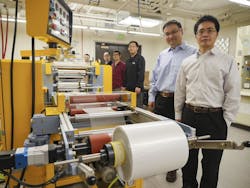In 2015, the U.S. Dept. of Energy, through its Advanced Research Projects Agency-Energy (ARPA-E), awarded a $3-million grant to three researchers, two at the University of Colorado-Boulder and one at the University of Wyoming. The trio of professors, Xiaobo Yin, Ronggui Yang, and Gang Tan, used that grant to develop a metamaterial that has the ability to cool objects – even in direct sunlight – without consuming energy or water.
According to Engheta and Ziolkowski’s Metamaterials: Physics and Engineering Explorations (John Wiley & Sons, 2006), metamaterials are “the fabricated structures and composite materials that either mimic known material responses, or qualitatively have new, physically realizable response functions that do not occur or may not be readily available in nature”. In other words, they are engineered products that can be manufactured and have physical properties that are not naturally occurring.
A regular contributor to HPAC Engineering and a member of its editorial advisory board, the author is a principal at Sustainable Performance Solutions LLC, a south Florida-based engineering firm focusing on energy and sustainability.
About the Author
Larry Clark
A member of HPAC Engineering’s Editorial Advisory Board, Lawrence (Larry) Clark, QCxP, GGP, LEED AP+, is principal of Sustainable Performance Solutions LLC, a South Florida-based engineering firm focused on energy and sustainability consulting. He has more than two dozen published articles on HVAC- and energy-related topics to his credit and frequently lectures on green-building best practices, central-energy-plant optimization, and demand-controlled ventilation.


